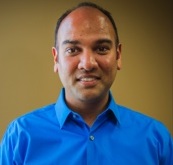IN Practice Gains Independence with Direct Primary Care Model
Unsatisfied with working for a hospital network, an independent practice owner adopted the direct primary care business model to deliver high-value primary care.

Source: Getty Images
- Risheet Patel, MD, was growing frustrated with how his practice had to deliver care and operate under a local hospital network entrenched in fee-for-service until he implemented direct primary care.
Patel would see 25 to 30 patients a day at his practice in Indiana, treating them like they were on a conveyer belt line. He would get patients in the door, take care of their health concerns that day, and get them out as quickly as possible so he could see the next patient and repeat the process.
“Working for the hospital network didn't give me the opportunity to delve into some of the concerns and health issues that patients had or spend the amount of time that I wanted to with patients,” he tells RevCycleIntelligence.com.
At the same time, fee-for-service was driving up his practice’s costs. Overhead expenses increased as Patel hired billers and coders to handle the complex insurance billing process for a growing number of patients.
Patel’s issues with being an employed physician are not uncommon. Value-based care, consumerism, innovative technologies, provider consolidation, and other trends are changing how practices run their business and deliver care.
READ MORE: Pay-for-Performance Strategies for Independent Physicians, Small Practices
Hospital acquisitions of physician practices increased 128 percent from 2012 to 2018, Avalere Health and the Physicians Advocacy Institute (PAI) report. And according to new data from the American Medical Association (AMA), employed physicians outnumber self-employed physicians for the first time in the US.
Physicians are choosing to work for a medical group or hospital, or they are closing their doors as overhead expenses eat away at nearly one-half of a practice’s revenue and physicians spend more and more time on administration and paperwork.
Practice owners like Patel are between a rock and a hard place. Physicians want to practice medicine according to their own rules and expertise, but larger group practice and hospitals offer the capital, staff, and other resources necessary to successfully manage the new business of medicine.
Fortunately, Patel found an alternative to the employed physician model that did not involve closing his practice or forgoing more of his independence. He quit his job at the local hospital network and established Fishers Direct Family Care, a direct primary care practice.
What is direct primary care?
According to the Academy of Family Physicians (AAFP), the direct primary care model is an alternative to fee-for-service insurance billing that charges patients a monthly, quarterly, or annual fee for most or all of the primary care services a patient receives.
READ MORE: Surviving Solo with Independent Practice Association Support
The business model frees physicians and practice owners from engaging in the complex insurance billing process, which also significantly decreases overhead expenses and eliminates the incentive to provide more care under fee-for-service.
Physicians also have more time and resources to care for the whole person under the business model, AAFP explains. Direct primary care practices rely solely on patient fees, not payer reimbursement rates, to offer comprehensive services their patients need.
“You can run the office the way that you want to run it,” Patel explains. “I am a family physician and when you look at all the family physicians out there, we are not all the same. Some people have an interest in pediatrics, or women's health, or sports medicine, or geriatrics. There's a whole slew of subspecialties or areas of interest.”

“But what you get to practice depends a lot on what your employer needs you to do and you may have to conform to what the company or medical group needs,” he adds. “When you are running your own practice, you get the opportunity to branch out and do things that you want to do within reason.”
For example, direct primary care enabled Patel to offer telehealth and e-visits at Fishers Direct Family Care.
READ MORE: What Independent Practices Need to Thrive Under Value-Based Care
“When I was working in my hospital network, we would struggle with telehealth and e-visit care because we did not know how we would get compensated for that in the office. A lot of insurance companies, or payers, wouldn't cover a visit like that,” he states. “Then, we would be concerned with whether we charge the patient out-of-pocket. It became a barrier to implementing technology.”
Implementing technology and offering new services is easier under a direct primary care model, he continues.
“I’m not worried about how I am going to get paid to do those things,” he says. “Through the monthly membership fee, patients automatically get access to any new technology or service that we implement in our office.”
By changing how his practice earns revenue, Patel hopes to increase the value of primary care at a similar, if not lower, cost compared to care at a traditional practice receiving fee-for-service payments.
“I provide better primary care because I have a better relationship with my patients, and I have the ability to delve into their health issues and handle problems in a complex manner,” he elaborates.
“Hopefully, I am saving patients from unnecessary testing, unnecessary referrals to specialists, or potential ER visits or hospitalizations because I can catch issues earlier. These will all be downstream savings that I may not see myself in the office, but patients, health plans, employer groups, and other stakeholders will see down the line.”
Establishing a direct primary care practice
Patel suggests more physicians consider the direct primary care business model if they are seeking greater independence or want to maintain their independence. However, making the change does come with some challenges, he warns other practice owners.
“You have to handle all of the day-to-day business processes that any small business owner has to worry about. So, accounting, payroll, marketing, insurance and those types of things,” he explains. “That's probably the biggest thing to think about as you transition away from an employed position to a DPC position. You, the physician, are now also the business owner, and you have to start making business decisions.”
Fortunately, medical societies, consulting firms, and other direct primary care practices can step in to help.
When Patel started looking into establishing a direct primary care practice about five years ago, he spoke with several medical societies, including the AAFP, which offered workshops, seminars, and online materials that physicians could use to understand and implement the business model.
Patel also partnered with the healthcare consultant Freedom Healthworks to manage the transition to direct primary care. The consultant handles the practice’s marketing strategy, as well as administrative tasks like managing the website, which gives Patel more time to be a physician.
There are a lot of resources out there, he stresses. But the biggest recommendation he has for any physicians thinking about direct primary care is to talk with other physicians.
"There are all kinds of communities out there, whether they are on Facebook or through a medical society, that are geared towards direct primary care and will talk about it,” he says.
The way physicians practice medicine is changing, especially outside of the hospital. Value-based care, quality reporting, provider consolidation, and other trends are making the independent practice seem like a part of the past.
Direct primary care is one of the ways physicians can adapt to the changing healthcare economy without losing their independence.
